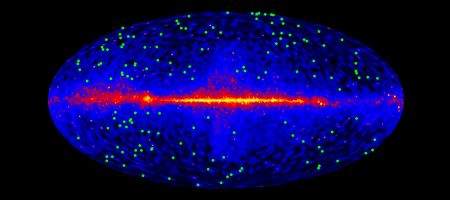Astronomers have measured the light from the very earliest stars, working out for the first time the total amount of light from all the stars that have ever shone.

“The optical and ultraviolet light from stars continues to travel throughout the universe even after the stars cease to shine, and this creates a fossil radiation field we can explore using gamma rays from distant sources,” explains Marco Ajello of Stanford University and the University of California at Berkeley.
The total sum of starlight in the cosmos is known to astronomers as the extragalactic background light (EBL), and functions as a kind of cosmic fog, obscuring gamma rays.
Ajello and his team investigated the EBL by studying gamma rays from 150 blazars, or galaxies powered by black holes, using NASA’s Fermi Gamma-ray Space Telescope.
As matter falls toward a galaxy’s supermassive black hole, some of it is accelerated outward at near light-speed in jets pointed in opposite directions. When one of these jets happens to be aimed towards Earth, the galaxy appears especially bright and is termed a blazar.
Gamma rays produced in blazar jets travel across billions of light-years to Earth – but, during their journey, pass through an increasing fog of visible and ultraviolet light emitted by stars that formed throughout the history of the universe.
Occasionally, a gamma ray collides with starlight and transforms into a an electron and its antimatter counterpart, a positron. Once this occurs, the gamma ray light is lost. In effect, says NASA, the process dampens the gamma ray signal in much the same way as fog dims a distant lighthouse.
But the researchers have been able to determine the average gamma-ray attenuation across three distance ranges between 9.6 billion years ago and today and use this to estimate the fog’s thickness.
The results show that the average stellar density in the cosmos is about 1.4 stars per 100 billion cubic light-years, which means the average distance between stars in the universe is about 4,150 light-years.
“The Fermi result opens up the exciting possibility of constraining the earliest period of cosmic star formation, thus setting the stage for NASA’s James Webb Space Telescope,” says Volker Bromm, an astronomer at the University of Texas, Austin.
“In simple terms, Fermi is providing us with a shadow image of the first stars, whereas Webb will directly detect them.”






